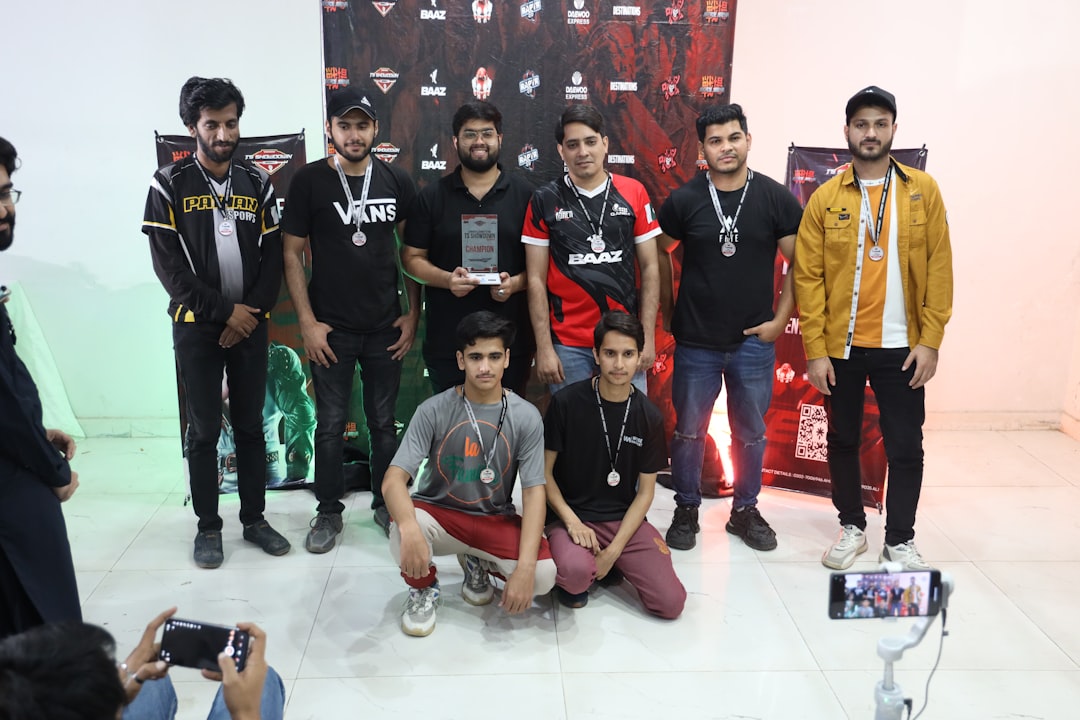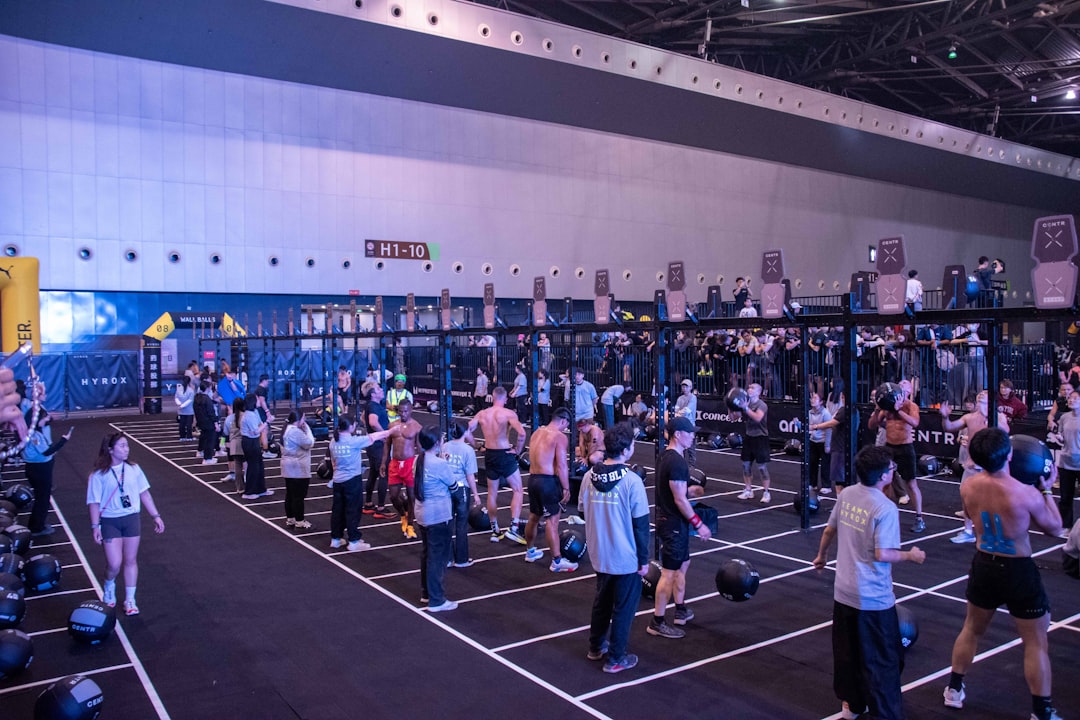

Engage prospects with a scan and streamline customer engagement with FREE QR code marketing tools by Sona – no strings attached!
Create a Free QR CodeFree consultation

No commitment

Engage prospects with a scan and streamline customer engagement with FREE QR code marketing tools by Sona – no strings attached!
Create a Free QR CodeFree consultation

No commitment
Tournament organization has long struggled with managing on-site engagement and tracking valuable attendee interactions in a seamless, actionable way. Manual check-ins, paper-based registration, and static printed materials frequently lead to bottlenecks, lost high-value prospects, and a lack of visibility into participant behavior. The result is a frustrating experience for attendees and missed opportunities for organizers who need better data to drive decisions and growth.
QR codes in marketing are now enabling tournament organizers to bridge these operational gaps. By digitizing formerly analog processes, organizers eliminate inefficiencies and reduce lines while capturing actionable participant data at every touchpoint. This approach solves persistent pain points like incomplete tracking and disengaged audiences by turning every scan into measurable intent and a gateway to instant action.
Strategic QR code workflows can transform static event materials into interactive, measurable digital experiences. The result is accelerated participant onboarding, higher registration and check-in completion rates, and instant lead capture for organizers and sponsors. Organizers can deliver a more connected and outcome-driven event from registration to awards while maintaining the flexibility to adapt in real time as the tournament unfolds.

For organizers who have experienced the frustration of missed registration windows or low participant follow-through, QR codes present an effective solution to bridge the gap between interest and action. Replacing printed brochures, paper forms, and manual sign-up sheets with mobile-first QR journeys reduces friction, shortens lines, and ensures every interaction is captured. This shift helps your team guide players, spectators, and sponsors from discovery to conversion with fewer drop-offs.
Common challenges such as unconverted demo interest or missing high-value prospects due to manual forms can be alleviated with targeted QR deployments that make it easy to act in the moment. As each scan is logged, you gain clarity into who is engaging, where they are in the journey, and what to do next. Platforms like Sona QR overview centralize code creation, design, and analytics so your staff can focus on delivering a great tournament experience while the system captures and organizes the data you need.
Each scan becomes an opportunity to reveal attendee intent and react quickly. By reducing missed connections and linking offline moments to digital outcomes, QR codes enhance event ROI and make success more predictable.

Tournament organizers often operate with limited insight into who is engaging at every phase. Without a clear view of audience identity or stage in the journey, high-value prospects remain anonymous and outreach becomes guesswork. QR codes close this loop by combining speed, simplicity, and data capture, giving organizers a way to measure what was previously invisible.
Whether you run local youth leagues or large-scale esports championships, QR-enabled touchpoints streamline the participant experience while producing actionable analytics. From entry queues to sponsor activations, every scan produces signals you can use to improve operations and prove value to partners.
These capabilities empower organizers to fix broken processes and build data-driven experiences that benefit players, spectators, sponsors, and staff.

Tournaments involve many audiences, each with different information needs. QR codes come in multiple formats that map neatly to these requirements, ensuring the right person gets the right content at the right moment. Choosing the correct format for each touchpoint simplifies logistics and captures useful data with minimal friction.
The most effective deployments pair the QR format with a tailored destination, such as a mobile form or live schedule. With Sona QR use cases, you can generate all formats in one place, manage dynamic updates, and view performance across your entire event portfolio.
By aligning QR formats with specific tasks, organizers maximize scan completion and transform every physical asset into a digital action point.

Growth in tournament operations hinges on meeting audiences where they already are. QR codes placed at high-traffic and high-intent locations convert passing interest into measurable action, from registrations to sponsor lead capture. Because scans are trackable, you can learn which placements drive outcomes and iterate quickly across events.
Focus on placements that remove friction, answer urgent questions, or unlock valuable perks. The more immediate the benefit of scanning, the higher your engagement and conversion rates will be.
Inconsistent engagement and manual processes have long limited participation and lead capture. QR codes address these challenges by turning static materials into dynamic experiences that streamline actions and measure results. When implemented across the event lifecycle, QR workflows create a smooth path from discovery to conversion.
Consider how the following use cases map to common friction points and outcomes. With each scan, organizers collect valuable data that powers smarter marketing, staffing, and sponsor relationships.
By addressing each stage of the event with context-driven QR solutions, organizers deliver smoother, more engaging experiences that convert intent into participation.
Many organizers lose touch with their most interested prospects once the event ends. Without the ability to segment by behavior, follow-up campaigns become generic and easy to ignore. By transforming each QR scan into a data point, you can tag audiences by intent and trigger relevant outreach automatically.
Use distinct codes for different journey stages and actions, then sync those segments to your CRM and ad platforms. This allows you to intent retargeting players, parents, coaches, spectators, volunteers, and sponsors with messages that match what they did and what they likely want next.
Practical examples include different follow-ups for players vs. spectators, coach-focused content for those who scanned coaching clinic materials, and sponsor offers tailored to on-site booth visitors. When your segments reflect real behavior rather than assumptions, retargeting becomes more efficient and effective.
Disconnected campaigns confuse prospects and dilute impact. QR codes unify offline and online interactions, ensuring every surface can drive a measurable action. From print advertising to live streams, codes reduce friction and allow you to attribute outcomes to specific channels.
A connected funnel in tournament marketing might start with a flyer scan to register, continue with a scoreboard scan for live brackets, and finish with a post-event survey accessed from a medal ceremony sign. Each interaction is captured and stitched together, revealing which messages and placements drive conversions.
With a centralized platform like Sona QR for sports, you can manage codes across channels, monitor performance in one dashboard, and sync scan data with CRM and ad platforms for cohesive measurement.
Operational missteps or unclear messaging can reduce engagement and revenue. A clear plan ensures that every QR placement serves a purpose, drives a defined action, and feeds your analytics for ongoing improvement.
Start by linking each QR code to a specific bottleneck, such as slow check-ins, missed registrations, or low sponsor lead volume. Then select the right code type, craft a compelling call to action, and test in real-world conditions. With each deployment, your data will reveal what works best, informing improvements for the next event.
Align the QR code with a concrete business outcome. For example, if weekend walk-ups overwhelm your desk, use a prominent QR code for mobile registration placed at the entrance and parking lot. If sponsor ROI is unclear, assign unique codes to each sponsor activation and offer to attribute scans and leads back to their assets.
Choose between static and dynamic codes based on your need for flexibility and tracking. Static codes suit permanent destinations like a rulebook PDF. Dynamic codes are best for trackable campaigns, evolving schedules, and tests that may change mid-event.
Clarity and scannability matter. Design a visual frame around the code, provide a benefit-driven CTA, and test on multiple devices at different distances and angles. Consider lighting conditions, glare on laminated signs, and the average distance from which people will scan.
Roll out codes where they will be noticed and where the action aligns with the moment. Place check-in codes at entrances, schedule codes near courts, and sponsor codes at booths and photo walls. For external promotion, use posters in gyms, direct mail to clubs, and social graphics that include QR overlays.
Use a platform like Sona QR to monitor scans by time, location, and device. Review completion rates, analyze drop-off points, and iterate on CTAs and landing pages. A/B test different designs or offers to see what improves conversion.
Low visibility into attendee behavior often means missed upsell or follow-up opportunities. Advanced QR code management platforms allow you to connect the dots between scans and outcomes, such as registrations, sponsor leads, and post-event sales. Instead of counting scans in isolation, you can measure progression across stages and attribute revenue back to campaigns.
Sona QR captures detailed scan data, including time, device, location, and source asset. Sona, an AI-powered marketing platform for identity resolution and attribution, extends this by connecting anonymous scans to known records through identity resolution and multi-touch attribution. Together, they transform real-world engagement into a digital footprint you can act on during and after the event.
With this analytics-driven approach, every real-world interaction becomes a measurable signal. You gain the insight needed to optimize spend, validate sponsor value, and continuously improve the attendee experience. Explore the Sona QR platform for scan analytics and attribution.
Many tournaments underperform by deploying generic QR code strategies that miss the chance to collect granular data or drive immediate action. A few focused best practices can dramatically increase scan rates and downstream conversions. For more execution ideas, see this marketing guide.
Select tactics that align with your physical media, the complexity of your venues, and the tools you already use. Small improvements in design, placement, and follow-up can compound across a busy tournament weekend.
Creative deployment examples include QR codes on referee badges that link to rules and protest forms, codes on limited-edition jerseys that unlock a discount on next year’s entry, and QR overlays on livestreams that allow remote viewers to join raffles or sponsor offers.
With increasing sensitivity around data privacy, mishandling scan data can erode trust and create compliance risk. Transparent communication and secure systems protect your community while preserving the value of your analytics.
Treat privacy as part of the user experience. Clear explanations at the point of scan, minimal data collection, and easy opt-out mechanisms show respect for participants and families, especially in youth events.
By embedding robust privacy practices into your QR workflows, you protect your brand and sponsors, while still unlocking the insights needed to run smarter events.

Organizers who embrace QR-driven workflows report measurable improvements across throughput, satisfaction, and revenue. While results vary by size and format, consistent themes emerge: shorter lines, clearer attribution, and better post-event engagement.
These examples show what is possible when QR codes are paired with clear goals, thoughtful placements, and integrated analytics.
As tournament organizers adapt to rising expectations and operational complexity, traditional manual workflows and disconnected channels no longer suffice. QR codes provide a practical framework to capture lost value, reveal previously invisible engagement signals, and create cohesive, conversion-focused touchpoints throughout the attendee journey.
By leveraging these tools to bridge physical and digital experiences, organizers can consistently surface high-value prospects, automate follow-up with timely relevance, and maintain clear visibility into what is working and where improvement is needed. The result is a future-ready tournament operation, optimized for attendee satisfaction and organizational growth.
Empowering every event asset with a QR journey increases operational efficiency and lays the foundation for smarter audience segmentation, sponsor ROI analysis, and meaningful relationships. With centralized creation, management, and analytics from platforms like Sona QR and Sona.com, tournaments can realize the full potential of every scan and convert real-world engagement into sustained momentum. Start creating QR codes for free.
QR codes have transformed tournament organizers from simple event facilitators into powerful engagement and conversion engines. Whether it’s streamlining player check-ins, delivering real-time updates, or boosting sponsorship activations, QR codes replace cumbersome processes with instant, mobile-friendly interactions that capture actionable data to maximize event success. Imagine effortlessly tracking which promotions drive registrations or which sponsors generate the most buzz—all in real time.
With Sona QR, you can create dynamic, trackable QR codes in seconds, update campaigns instantly without reprinting materials, and connect every scan directly to your revenue goals. No more guessing which strategies work—just smarter, data-driven decisions that elevate tournaments and boost conversions. Start for free with Sona QR today and turn every scan into a winning play.
QR codes digitize analog processes to reduce inefficiencies, speed up registration and check-in, capture actionable participant data, and transform static materials into interactive digital experiences that enhance engagement and operational flexibility.
Best practices include choosing QR code types that match use cases, designing clear and scannable codes with compelling calls to action, deploying codes at high-impact locations, training staff to promote scanning, and using analytics to track and optimize performance in real time.
Use contactless QR code check-in systems embedded in confirmation emails, e-tickets, or entry signage to log attendance automatically, reduce queues, and generate accurate, real-time attendance records for better capacity planning and security.
Platforms like Sona QR provide centralized QR code creation, design, and analytics, enabling organizers to deploy interactive forms, live updates, feedback capture, sponsor lead collection, real-time bracket access, and personalized retargeting based on participant behavior.
Replace paper forms with mobile-friendly QR code registration that enables instant onboarding, reduces lines, captures walk-up participants, and integrates with tracking systems to increase completion rates and minimize lost prospects.
Common effective QR code formats include web links for schedules and registration, vCards for contact sharing, forms for registrations and feedback, check-in codes for attendance tracking, and app download links to promote event apps.
Place QR codes at entry points, lanyards, tickets, courts, sponsor booths, merchandise, digital signage, and print collateral to reduce friction, provide timely information, promote offers, and capture leads effectively.
By assigning unique, trackable QR codes to sponsor assets and placements, organizers can monitor scan rates and engagement, attribute leads and registrations to specific campaigns, and provide credible ROI reporting to sponsors.
QR scans can be tagged by user behavior and journey stage, synced to CRMs and ad platforms, and used to trigger personalized follow-ups and targeted campaigns that match participant intent, improving retention and conversion.
Organizers should provide clear information about data collection and usage, obtain informed consent, use platforms compliant with GDPR and CCPA, secure data with encryption, limit access, and train staff on proper data handling to protect participant privacy.
Use Sona QR's trackable codes to improve customer acquisition and engagement today.
Create Your FREE Trackable QR Code in SecondsJoin results-focused teams combining Sona Platform automation with advanced Google Ads strategies to scale lead generation

Connect your existing CRM

Free Account Enrichment

No setup fees
No commitment required

Free consultation

Get a custom Google Ads roadmap for your business






Launch campaigns that generate qualified leads in 30 days or less.
